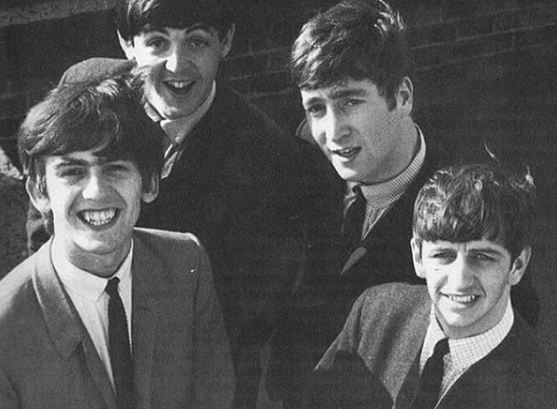The burdens that fame imposed on the Beatles began to wear them down in 1966. The band’s traveling schedule made the pattern of releasing a new single every three months and an album every six months impossible for normal humans to maintain. By the end of the year, they would permanently stop traveling and devote more time to developing as musicians and men.
The concept of “artistic evolution” in rock music was developed as a result of unrestricted studio time and a desire to discover new musical realms. The Beatles experimented a lot, but they never lost sight of their core lyrical inclinations, and the caliber of both their commercial and creative output remained very high. Here are the Underrated Beatles Songs Released From 1966 to 1970, there are many songs from the band’s latter years that don’t receive the credit they deserve.
One After 909 – ‘Let it Be’ (1970)
One of the first songs that John Lennon and Paul McCartney penned together, they recorded a version in March 1963 that has since been lost. In an effort to get back to their origins, they revived the song and played it at their renowned rooftop event. The rather straightforward train blues “One After 909” is led admirably by Lennon and McCartney, while George Harrison plays some sick guitar.
Polythene Pam – ‘Abbey Road’ (1969)
Even with their widespread popularity, the Beatles might still, on occasion, be considered genuine sons of Liverpool. Both “Penny Lane” and “I Am the Walrus” make reference to jokes they heard in Merseyside schools when they were young. However, Lennon returns to his Scouse accent on “Polythene Pam,” which is around halfway through the album-closing medley “Abbey Road,”, especially in the second stanza.
Lovely Rita – ‘Sgt. Pepper’s Lonely Hearts Club Band’ (1967)
It’s difficult to imagine that any of the songs from “Sgt. One may argue that Pepper’s Lonely Hearts Club Band is underappreciated. However, “Lovely Rita” is sometimes mocked as being an uninspired McCartney filler. While its upbeatness cannot be disputed, a closer listen reveals how at the top of his game McCartney was in 1967. His vocals are so strong and smooth that he doesn’t appear to care that he didn’t get Rita. He’s Paul McCartney, after all, so he can find someone else.
Rain – B-Side to ‘Paperback Writer’ (1966)
Ringo Starr has received more unjust criticism than most drummers, which is why the B-side of “Paperback Writer,” “Rain,” belongs on our list. This is his best performance, along with his symphonic drumming on “A Day in the Life.” Have those around you listen to Ringo’s creative and powerful fills the next time they criticize his drumming. Inform them that the track has been slowed down.
Two of Us – ‘Let it Be’ (1970)
The group broke up during the recording of “Let it Be,” which was a complete catastrophe. The project’s greatest songs were written by McCartney, who appeared to be the only person interested in it. The beauty of “Two of Us,” like “One After 909,” comes from John and Paul putting their differences aside and singing together once more. Lennon may have been partially responsible for this as he thought McCartney had written the song about their relationship even though it was actually about his future wife Linda Eastman.
I’m So Tired – ‘The Beatles’ (1968)
.Many of the songs from “The White Album” might theoretically be included on our list because it was a double album without singles (a feat that at the time could only be accomplished by the Beatles). We’ve only selected two, among them “I’m So Tired,” in which Lennon exhibits his greatest vocal and lyrical qualities in the contrast between the lethargy of the verse and the sensual torment of the song’s middle.
For No One – ‘Revolver’ (1966)
While ‘For No One’ depicts something quite different from the repercussions of previous relationships that are the subject of so many songs, When a couple runs out of things to say to one another and all trust has been lost, McCartney depicts that moment and how only fond memories may keep them together. He also adds a usually gorgeous melody and a French horn solo, which is unusual in rock, to soften the harsh reality of the circumstance.
Mother Nature’s Son – ‘The Beatles’ (1968)
With “Blackbird,” “I Will,” and this song—one of his prettiest compositions—all appearing on “The White Album” in 1968, McCartney’s interest in folk music reached its zenith. What’s more amazing is that “Mother Nature’s Son” is sandwiched between two Lennon rockers (“Yer Blues” and “Everybody’s Got Something to Hide Except for Me and My Monkey”) and still manages to shine.
Getting Better – ‘Sgt. Pepper’s Lonely Hearts Club Band’ (1967)
Even though their songs were given shared credit, Lennon and McCartney often composed individually, offering one another suggestions along the way. As their portions on “A Day in the Life” and “I’ve Got a Feeling” were written separately and then blended to create one song, “Getting Better” is one of the final genuine Lennon-McCartney collaborations. Paul’s unwavering optimism (“It’s getting better all the time”) is abruptly interrupted by John’s sarcasm (“It can’t get no worse”), a phrase that perfectly sums up their opposing worldviews.
Hey Bulldog – ‘Yellow Submarine’ (1968)
Lennon’s use of a scorching vocal performance in “Hey Bulldog” is what allows him to convey meaning to the absurdist gibberish, much as he did in “I Am the Walrus,” which was also influenced by Lewis Carroll’s writings. The song “Hey Bulldog” is at the top of our list because of that incredible riff, which is simultaneously played on the piano, guitar, and bass and pounded out rhythmically by Starr.

